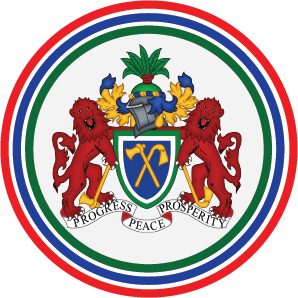| Geographical Location | West Africa |
| Land Area | 11, 300 KM |
| Population Density | 174 Person KM |
| Population | 2,706,000 |
| Population, female (% of total) | 50.4 (2019) |
| Population, male (% of total) | 49.6 (2019) |
| Urban population (% of total) | 61.9 (2019) |
| Urban population growth rate (annual %) | 4.0 (2019) |
| Rural population (% of total population) | 38.0 (2019) |
| Population ages 15-19, female (% of female population) | 10.6 (2019) |
| Population ages 15-19, male (% of male population) | 10.8 (2019) |
| Type | Presidential Republic |
| Electoral Cycle | 5 Years |
| Constitution | 1997 Constitution of The Republic of The Gambia |
| The proportion of seats held by women in National Parliament(%) | 10.3 (2019) |
| Key Political events | 18 February 1965 gained Independence |
| Number of Local Government Areas | 8 |
| GDP ( USD Billion) | 1.90 (2020) |
| GDP per capita (USD) | 807 (2019) |
| GDP per capita growth (annual %) | -2.9 (2020) |
| Trade (% of GDP) | 55.5% (2019) |
| Net official development assistance received ( USD) | 194, 039, 993.286 (2019) |
| Net ODA received per capita (USD) | 82.7 (2019) |
| Proportion of the Population living below $1.25 /per day | 48.6 (2015 – 2016) |
| Domestic general government health expenditure (% of GDP) | 0.9 (2018) |
| Domestic general government health expenditure (% of current health expenditure) | 30.6 (2018) |
| Current Health Expenditure per capita (USD) | 22.2 (2018) |
| Domestic private health expenditure per capita (USD) | 33.3 (2018) |
| Prevelence of anaemia among pregnant women (%) | 55.1 (2019) |
| Demand for family planning satisfied by modern methods (% of married women with demad for family planning) | 41.3 (2019 – 2020) |
| Maternal Mortality ratio (per 100, 000 live births) | 289 (2019 – 2020) |
| Mortality rate, neonatal (per 1, 000 live births) | 29 (2019 – 2020) |
| Mortality rate, under – 5 (per 1, 000 live births) | 56 (2019 – 2020) |
| Fertility rate, total (births per woman) | 4.4 (2019 – 2020) |
| Life Expectancy at birth, Female | 63.5 (2019) |
| Life Expectancy at birth, Male | 60.6 (2019) |
| Contraceptive prevalence, any methods (% of women ages 15 – 49) | 19.0 (2019 – 2020) |
| Contraceptive prevalence, modern methods (% of women ages 15 – 49) | 17.0 (2019 – 2020) |
| Adolescent fertility rate (births per 1000 women ages 15 – 19) | 65.0 (2019 – 2020) |
| Birth attended by skilled health personnel | 83.8 (2019 – 2020) |
| HIV prevalence rate for the population aged (15 – 49 years) | Total 1.9 (2013) |
| Male 1.7 (2013) | |
| Female 2.1 (2013) | |
| Umemployment rate for the population aged (15 – 49 years) | Total 35.2 (2018) |
| Male 42.9 (2018) | |
| Female 57.1 (2018) | |
| Youth Unemployment Rate (15 – 35 Years) | 41.5 (2018) |
| Youth not in employment, education or training (NEET) | Total 56.8 (2018) |
| Male 44.7 (2018) | |
| Female 56.3 (2018) | |
| Literacy rate for the population aged (15 – 49 years) | Male 63.4 (2018) |
| Female 48.1 (2018) | |
| The proportion of the population with access to safely managed drinking water | 33.8 (2018) |
| The proportion of the population with access to improve sanitary facilities | 61.8 (2018) |

Copyright © Government of The Republic of The Gambia.
